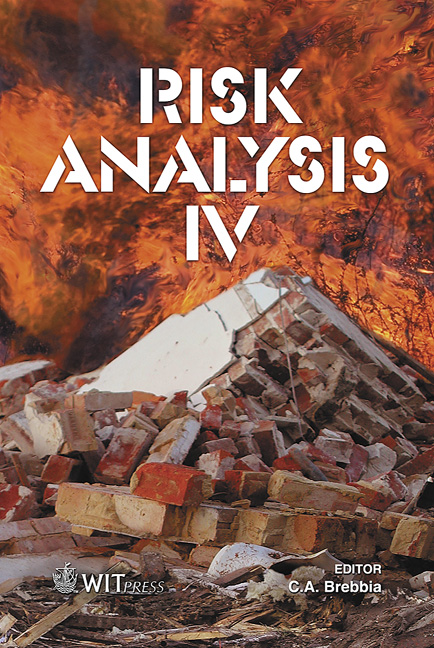Empirical Estimate Of Vulnerability Relations For Use In Snow Avalanche Risk Assessment
Price
Free (open access)
Transaction
Volume
77
Pages
10
Published
2004
Size
972 kb
Paper DOI
10.2495/RISK040481
Copyright
WIT Press
Author(s)
M. Barbolini, F. Cappabianca & R. Sailer
Abstract
Formal risk analysis may be considered a promising method for evaluating the danger to people from avalanches and for introducing proper land-use regulation in hazard prone areas. According to the Committee on Risk Assessment of the Working Group on Landslides of the International Union of Geological Sciences (IUGS, [1]) quantitative risk analysis involves expressing the risk as a function of the hazard, the elements at risk and the vulnerability. Vulnerability is defined as the degree of loss to a given element or set of elements at risk within the area affected by avalanches. It is expressed on a scale of 0 (no loss) to 1 (total loss). For property, the loss will be the value of the property, and for persons it will be the probability that a particular life (the element at risk) will be lost, given the person is affected by the avalanche. A relevant limit of all the current procedures for avalanche risk calculation is the lack of knowledge on how avalanche impacts damage structures and cause fatalities. In this study data from two catastrophic avalanches which occurred in the Austrian Alps are analysed in a way to define vulnerability relations suitable for alpine buildings, as well as for people inside them. On the basis of data on avalanche accidents which occurred during outdoor winter activities over the Italian Alps in the last 20 years, a vulnerability relation for people directly exposed to avalanches is also tentatively proposed. The empirical curves found in this study express the vulnerability as a function of avalanche dynamical parameters, such as velocity and flow depth, and can be easily implemented in a risk-analysis framework. However, more data on catastrophic avalanches are crucial to assess the validity of the results presented. Keywords: snow avalanches, risk, vulnerability, study cases.
Keywords
snow avalanches, risk, vulnerability, study cases.





